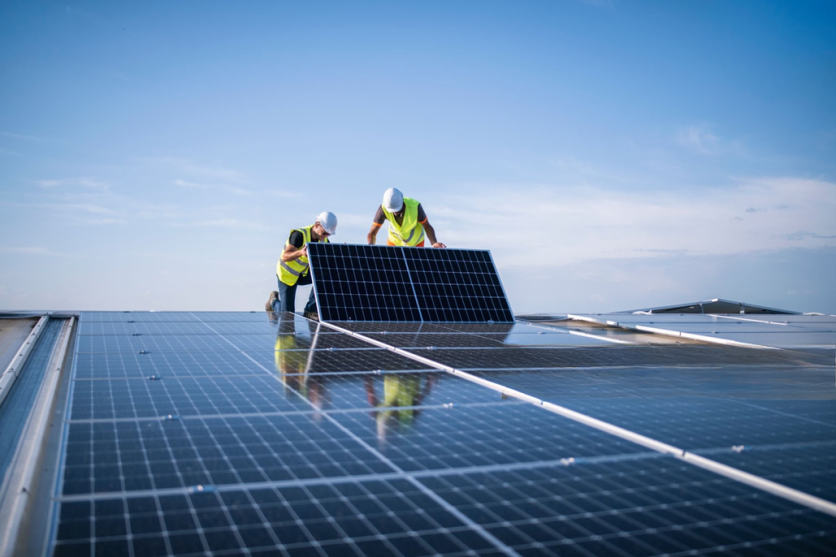
A New Approach to Going Solar
When homeowners decide to go solar, many assume the process is as simple as choosing a provider and scheduling an installation. In reality, there is a common obstacle that can stop projects before they begin: the roof. If the roof is old, damaged, or nearing the end of its lifespan, most installers will not move forward until it is replaced.
More solar providers are now moving toward integrated roofing and solar services to reduce delays and cut costs. Purelight Power, which operates across the Pacific Northwest and is expanding into California, Virginia, North Carolina, and South Carolina, is one of several companies betting that this bundled approach could become the new standard in home energy.
The Problem with Separate Contractors
For decades, roofing and solar were handled by different trades. A homeowner might sign a contract for solar panels, only to discover later that their roof could not support the system.
"It is one of the biggest frustrations we hear from homeowners," says Josh Hoeg of Purelight Power. "They are excited about solar, but they end up facing an unexpected roof replacement before they can move forward."
Hiring a roofer separately often adds months to the project. It also creates warranty headaches: if a leak develops later, the roofer and solar installer may blame one another, leaving the homeowner stuck in the middle.
The Rise of Integrated Solar and Roofing
This gap in the market has led to a growing trend: companies offering integrated solar and roofing solutions. Homeowners can now replace their roof and install panels through a single provider, rather than juggling two contractors.
The benefits are clear:
- One point of contact. No need to manage multiple companies.
- Unified warranties. A single provider takes responsibility for both the roof and the panels.
- Simplified financing. Roofing costs can often be bundled into solar loans, and in some cases may even qualify for tax incentives.
Purelight has already expanded its roofing services in Oregon, including Portland and Bend, where demand for combined projects is strong. "By combining services, we are removing one of the biggest barriers to going solar," adds [Executive Name]. "When homeowners can solve two problems with one investment, adoption goes up dramatically."
Why It Matters for Homeowners
Bundling a roof replacement with a solar installation is not just about convenience; it can also deliver long-term savings. According to the National Renewable Energy Laboratory (NREL), the average residential solar system costs between $15,000 and $25,000, while a new roof ranges from $10,000 to $15,000. When handled separately, these projects often require different loans with different terms.
Doing them together allows some providers to fold both projects into a single financing plan. The Solar Energy Industries Association notes that portions of the roof replacement that directly support the solar system may qualify for federal tax credits, lowering costs by thousands of dollars.
There is also a practical advantage. A new roof can last 25 to 30 years, roughly the same lifespan as most solar panels. Aligning the two investments helps ensure the solar system produces consistently without major interruptions.
Industry Perspectives
Analysts are paying attention. The Solar Energy Industries Association (SEIA) has identified "roof readiness" as one of the most common barriers for homeowners considering solar. That has made integrated services an attractive option as adoption continues to rise.
Purelight Power is not the only company moving in this direction, but it has been among the early adopters in the Pacific Northwest. The company recently earned recognition as a Best of Bend award winner for solar, placing second in the category. The award highlights how local communities are responding to providers that simplify the process and reduce barriers for homeowners.
"Energy is changing faster than most homeowners realize," says Josh Hoeg. "In the next decade, we believe solar will be as standard as air conditioning, and integrating roofing is part of making that future practical and affordable."
Looking Ahead
As more states introduce incentives and homeowners look for ways to lower energy bills, pairing solar with roofing may soon become the default option. For homeowners, the shift promises fewer surprises, stronger warranties, and more predictable savings.
Going solar has always been about more than clean energy. It is also about making a smart, lasting investment in the home. With roofing and solar increasingly handled together, that investment is becoming much easier to manage.
ⓒ 2025 TECHTIMES.com All rights reserved. Do not reproduce without permission.





